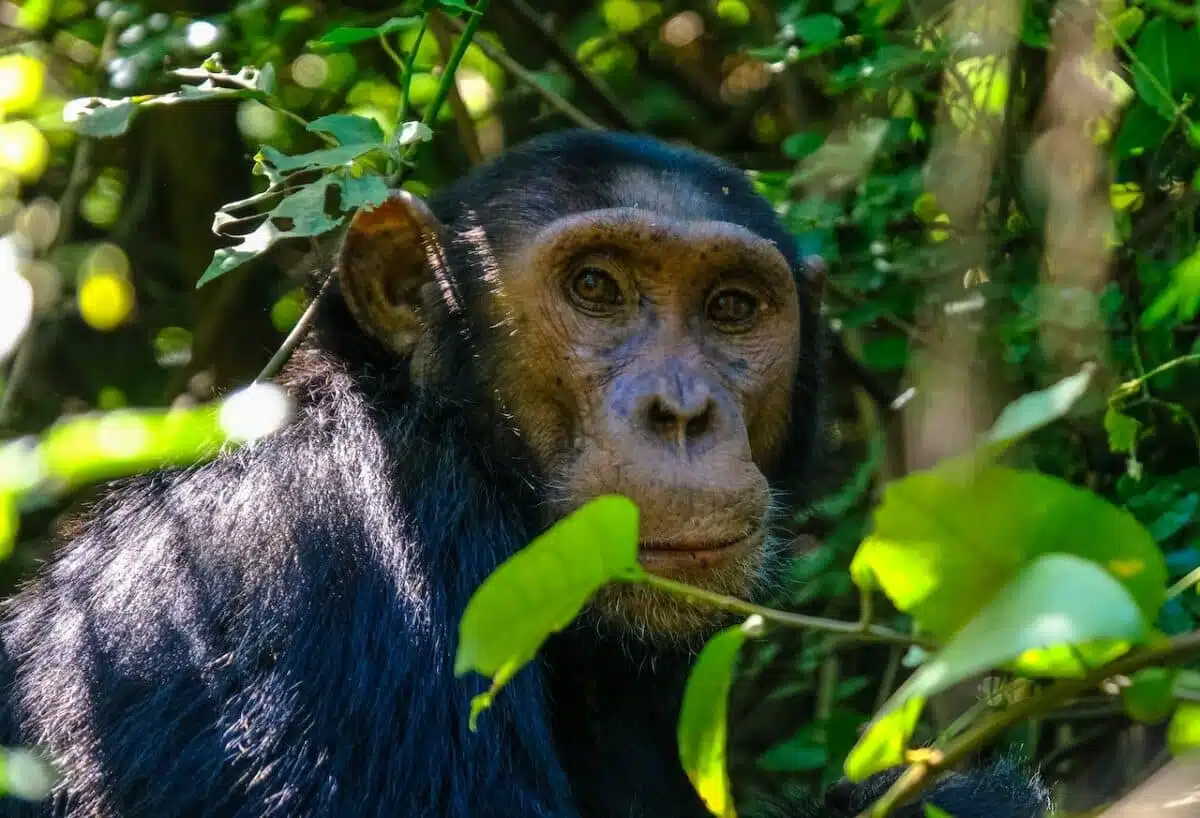Chimpanzees are fascinating primates known for their intelligence, social behavior, and unique personalities. These great apes come in all shapes and sizes, but few compare to the largest chimpanzee ever recorded. Meet Boma, a male chimpanzee weighing an astonishing 236 pounds and over 5 feet tall.
It’s hard not to be impressed by this majestic creature, but what else do we know about Boma and his species? In this article, we’ll delve into the secrets of the world’s largest chimpanzee and uncover some interesting facts about these incredible animals.
Physical Characteristics Of Boma: Weight And Height
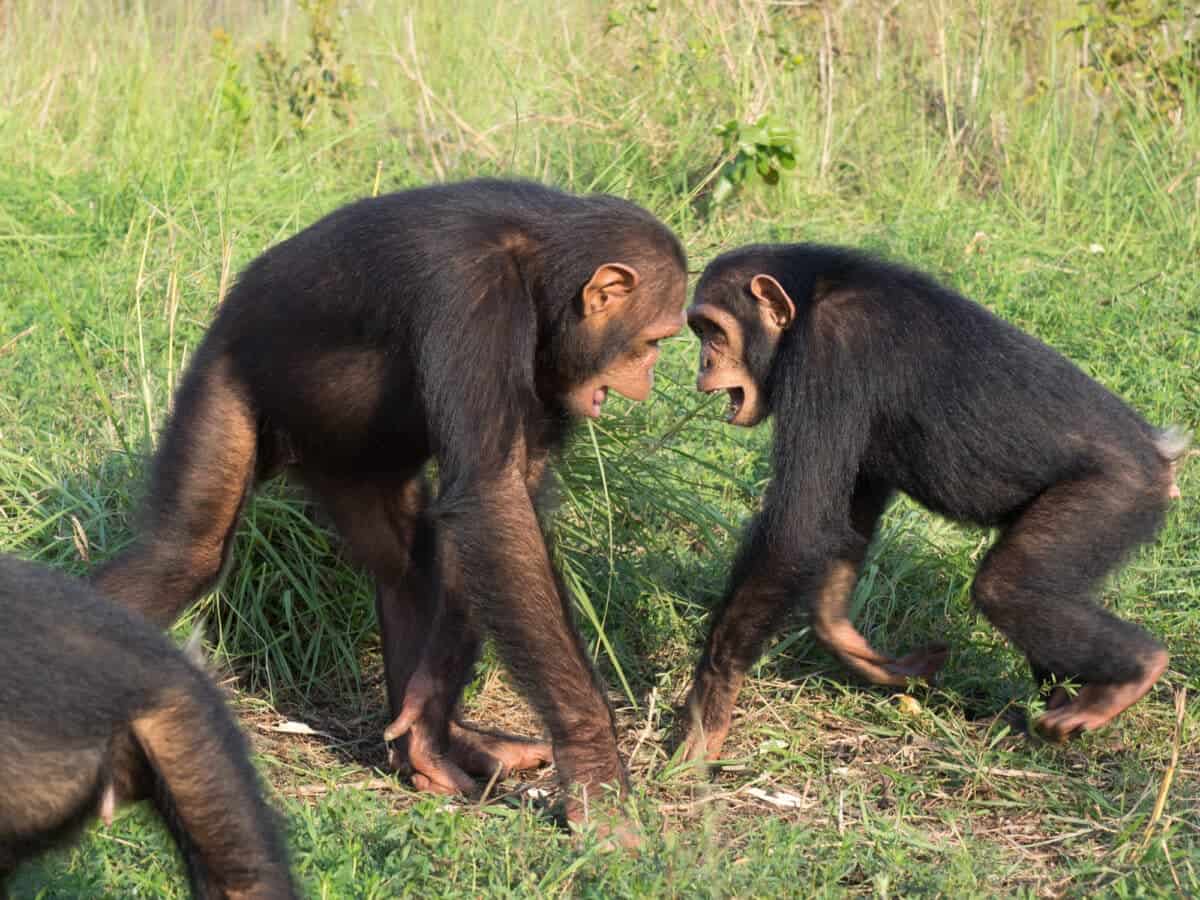
Boma is not your average chimpanzee. He is a giant, weighing an incredible 236 pounds and over 5 feet tall. To put that into perspective, the average adult male chimpanzee weighs around 130 pounds and stands 3 to 4 feet tall. Boma’s size is due to a combination of genetics and his upbringing. He was found and raised in the wild by a group of humans who raised him as a pet, feeding him an abundant diet of fruits, vegetables, and meat.
Unique Physical Features
Facial Characteristics – Boma’s face is unique in that it is broader and flatter than most, making his nose look more prominent in comparison. He also has a pronounced brow ridge and a large jaw, giving him a powerful and intimidating appearance.
Body Shape – Boma’s body is muscular and robust, with broad shoulders and a thick chest. His arms and legs are longer than most, giving him greater reach. Additionally, his fingers and toes are longer and more dexterous, allowing him to grasp objects more precisely.
Strength and Agility – Boma’s size and strength make him an impressive force in the primate world. He can lift and carry objects weighing up to 100 pounds easily, and his powerful jaws can easily crush fruits, nuts, and seeds. Despite his size, Boma is also incredibly agile and can move quickly through the trees when necessary.
It’s important to note that while Boma’s size is undoubtedly impressive, it is not a desirable trait in chimpanzees. In the wild, larger individuals are often more aggressive and have difficulty finding food and mates. Nonetheless, Boma is a fascinating example of the incredible diversity found within the chimpanzee species.
Behavior And Personality of the Largest Chimpanzee
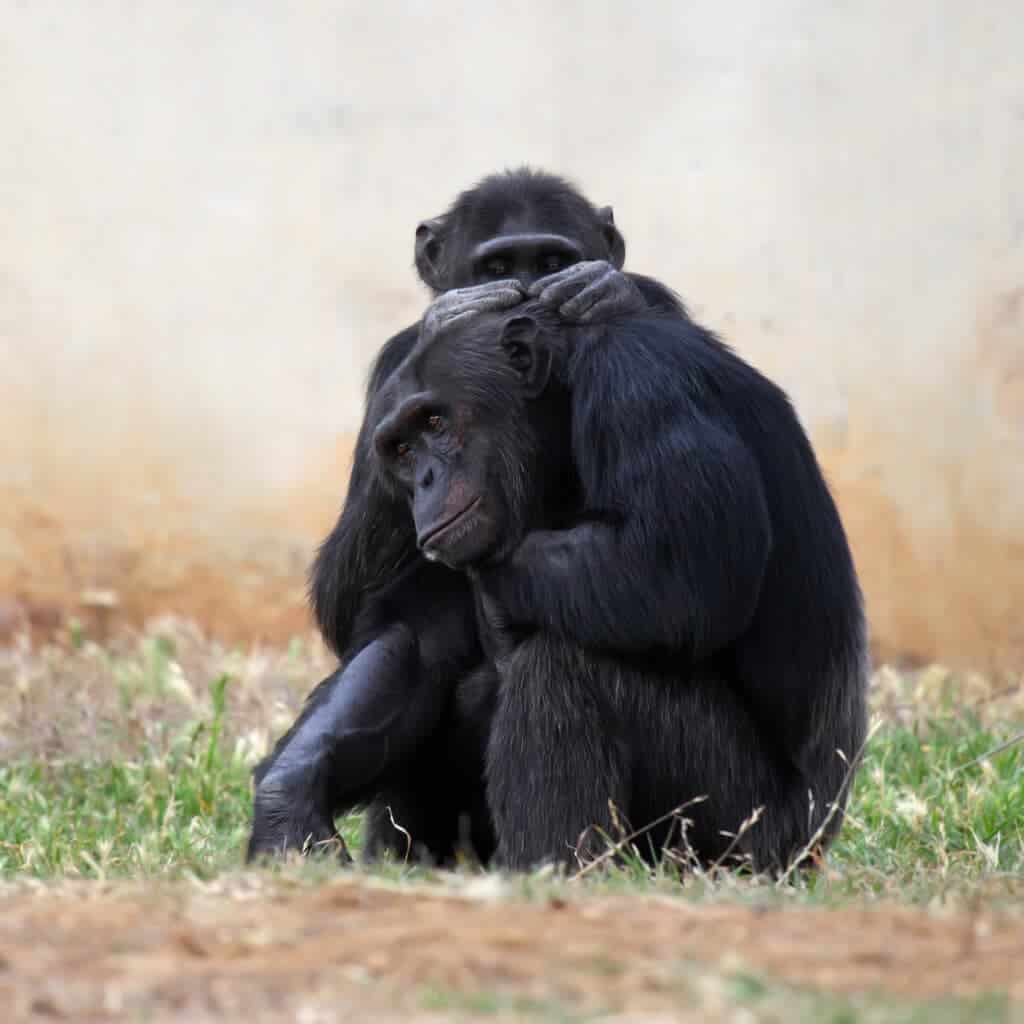
They are friendly animals who prefer to live in big groups, ranging from 20 to over 100 members. These groups have complicated relationships where individuals become close friends and form teams. The group’s structure is determined by age, gender, and how aggressive they are, with the most powerful males usually being the leaders.
Close bonds are created between mothers and their children, as well as among siblings. But sometimes, members of the same group can argue because they want the same things. A typical reason for these arguments is the competition for resources. They are a good example of this. They make alliances, work together to hunt for food, and even make up after fighting.
Communication of the Largest Chimpanzee
They communicate with each other through a variety of vocalizations, gestures, and postures. Some of their sounds include screams, hoots, and grunts. They also use facial expressions to convey emotions, such as fear, anger, and happiness. They also have a unique way of communicating through sign language and have been taught to communicate with humans in this way.
Check out how Chimpanzee language: Communication gestures translated.
Intelligence And Cognitive Abilities
Chimpanzees are highly intelligent animals with cognitive abilities that rival those of humans in many ways.
- Tool Use
Chimpanzees are known for their impressive tool-use abilities. They have been observed using tools such as sticks to extract insects from hollow trees and rocks to crack nuts. They have even fashioned their tools by modifying branches and sticks.
- Problem Solving
Chimpanzees are excellent problem solvers who can understand cause-and-effect relationships and plan for future events. For example, they have been observed using tools to obtain food, demonstrating an understanding of the relationship between the tool and the desired outcome.
Personality Traits of the Largest Chimpanzee
Chimpanzees, like humans, have distinct individual personalities.
Within chimpanzee communities, dominance is a key aspect of social behavior. Dominant individuals are typically more aggressive and are more likely to have access to resources such as food and mates. However, this aggression is often a means of establishing dominance rather than a display of aggression for its own sake. Dominant individuals may also demonstrate higher levels of self-confidence and may have a greater likelihood of success in their endeavors.
Habitat And Distribution
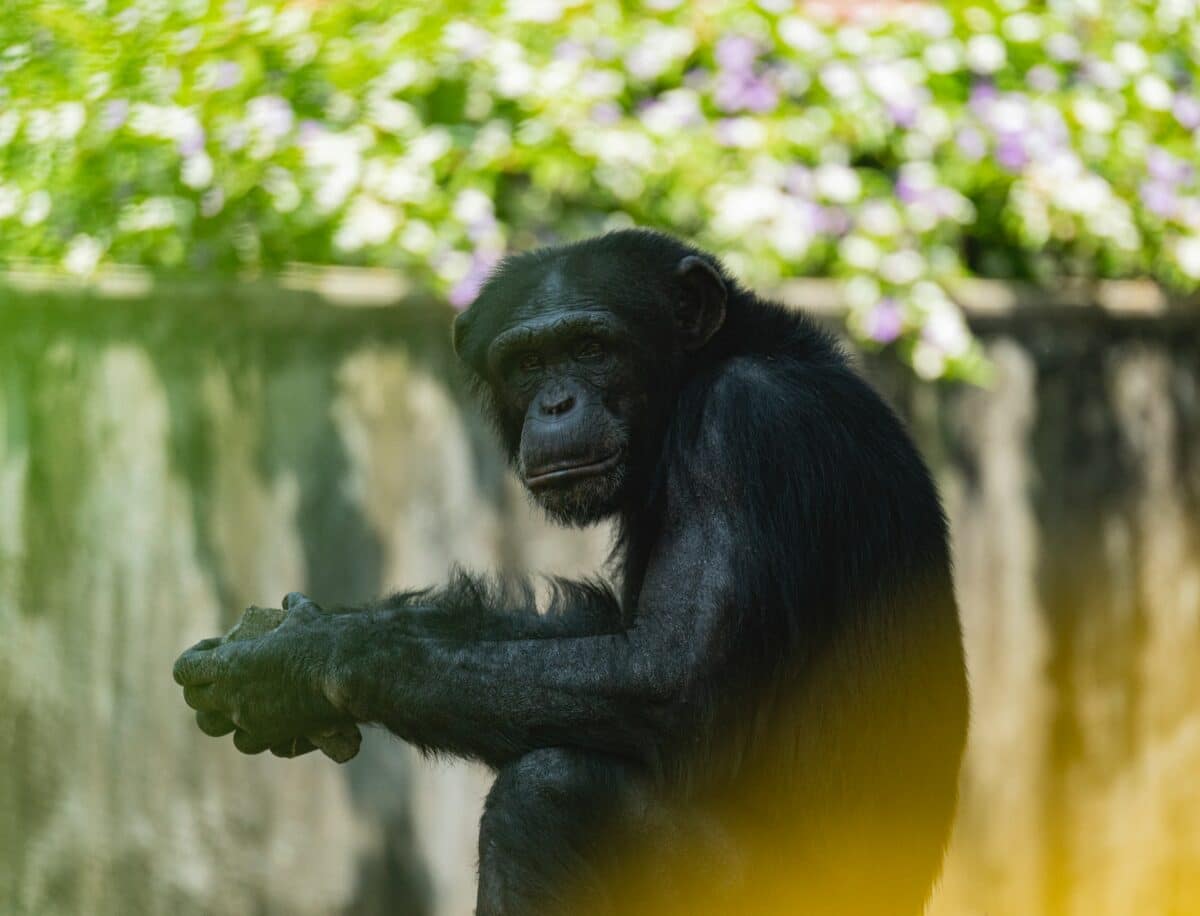
Chimpanzees are native to the African continent, where they can be found in 21 countries spanning from West to East Africa. These fascinating primates are incredibly adaptable and can thrive in various habitats. The natural habitat of chimpanzees includes both forests and savannahs.
Forests are the primary habitat of chimpanzees. They prefer dense forests, as it provides them with shelter, food, and protection from predators. The chimpanzees in the rainforests of Central and West Africa are considered true forest-dwellers.
On the other hand, savannah chimpanzees inhabit the open savannah woodlands and grasslands of West Africa. They live in areas with fewer trees, making a more challenging living environment. Boma, the world’s largest chimpanzee, made his home in the forests of Cameroon. This region is known for its high-density chimpanzee populations.
Range And Distribution
Chimpanzees once roamed freely across the African continent from the west coast of Senegal to the east coast of Tanzania. However, they are now only found in isolated populations. Due to habitat loss, chimpanzee populations are becoming increasingly fragmented. Their range has been reduced, and they are now confined to small pockets of forest.
Today, the largest chimpanzee populations are found in remote forested regions of Central and West Africa. These areas include the dense tropical rainforests of Congo, Gabon, and Cameroon and the savannah of Cote d’Ivoire and Guinea.
Threats To Chimpanzees
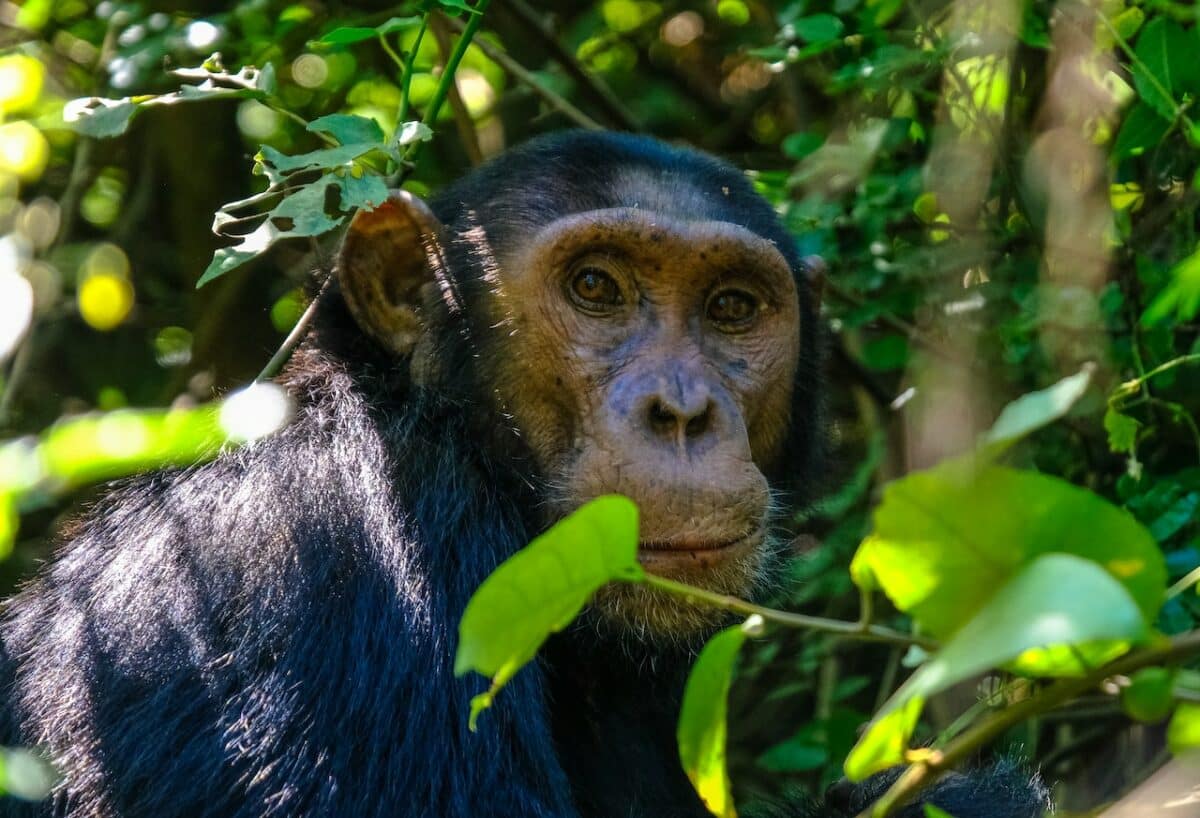
Chimpanzees are classified as endangered by the International Union for Conservation of Nature (IUCN). Habitat loss, hunting, poaching, and diseases are the greatest threats to chimpanzees.
Habitat Destruction
The primary threat facing chimpanzees is habitat destruction, driven by logging, agriculture, and mining. The loss of forest habitats has led to a fragmentation of chimpanzee populations and restricted their range.
Hunting And Poaching
Hunting and poaching are other significant threats to chimpanzees. In some areas of Africa, chimpanzees are still hunted for meat or captured and sold as pets. The Bushmeat trade, which is the commercial sale of wild-animal meat, poses a significant risk to chimpanzees and other endangered species.
Diseases
Diseases are also a significant threat to chimpanzees. Human diseases can be transmitted to chimpanzees, making them vulnerable to outbreaks like Ebola and other infectious diseases. Habitat loss, fragmentation, and the bushmeat trade increase the likelihood of disease transmission between humans and chimpanzees.
Conservation Efforts for the Largest Chimpanzee
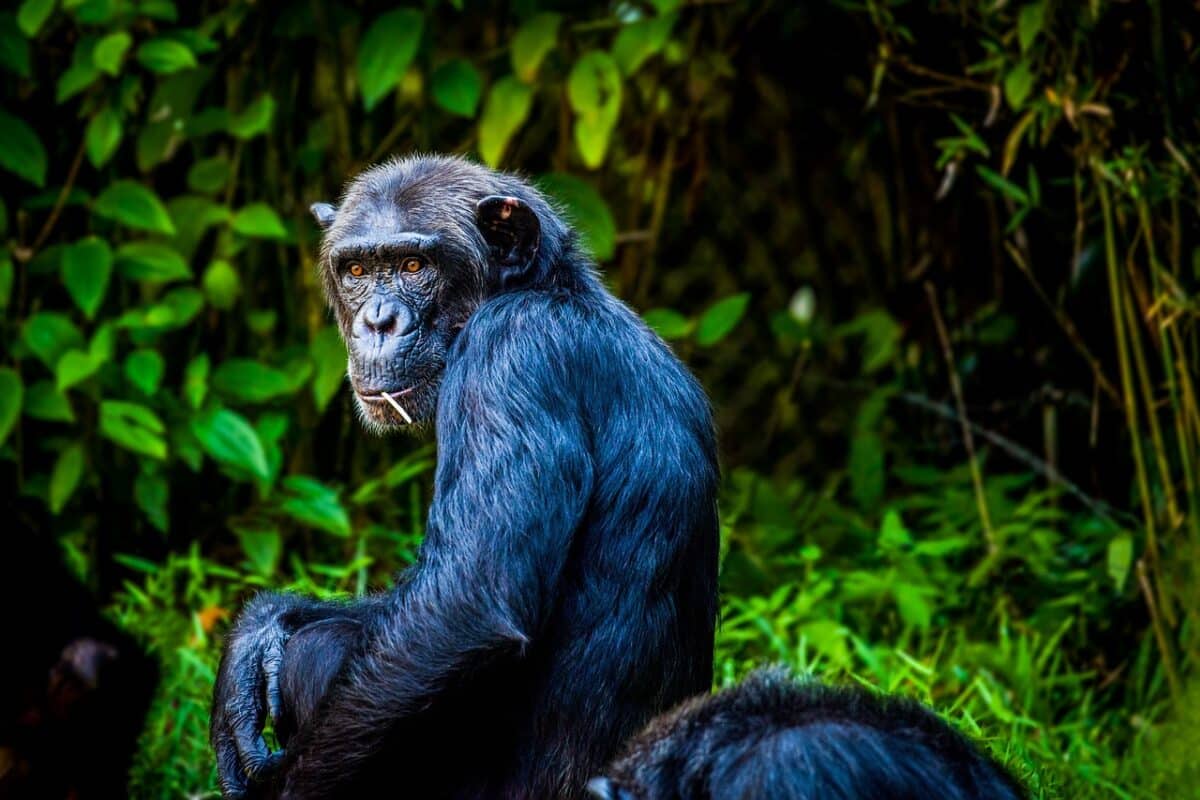
Conservation is a complex issue that requires a multifaceted approach involving various stakeholders and strategies. Some notable conservation efforts aim to protect them and their habitats. Habitat loss and fragmentation are major threats to them as humans continue to expand their agricultural, urban, and industrial activities into the forests where these primates live. Many organizations are working to conserve and restore their habitats, such as national parks, wildlife reserves, and community forests to counteract this trend.
For instance, the Jane Goodall Institute has established several sanctuaries and rehabilitation centers in Africa, where the orphaned and injured can receive care and potentially be reintroduced to the wild. These sanctuaries also provide education and ecotourism opportunities for visitors, which can raise awareness and funds for conservation.
Similarly, the World Wildlife Fund has launched the Congo Basin Forest Partnership, which aims to preserve the second-largest rainforest in the world and the biodiversity it harbors, including chimpanzees. The partnership involves governments, NGOs, and local communities in sustainable forest management and monitoring of illegal logging and hunting.
Wrapping Up with the Largest Chimpanzee
Finally, Boma and other large chimpanzees are unique and impressive creatures. Evidently, their size is a testament to these great apes’ potential and their ability to thrive in different environments. However, it’s important to remember that chimpanzees are also intelligent and social animals that require proper care and attention. We can better understand and appreciate these amazing creatures by learning more about the world’s largest chimpanzees and their behavior.
Next up:
- Bald Eagle Family Expand Their Nest In California - April 24, 2024
- Firefighter Saves Abandoned Kittens Found Cuddling In Hoses - April 24, 2024
- Dolphins Get High Playing Catch With A Pufferfish - April 24, 2024

